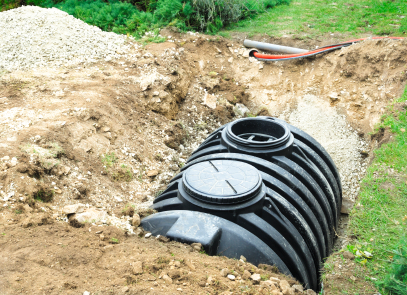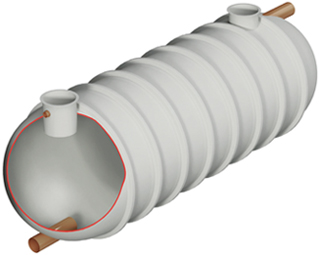
Septic tanks are the ideal choice for many homeowners, whether you need a cost-effective option, the mains drainage system is not available, or you are interested in being more environmentally friendly.
This article details how a septic tank works, the benefits of installing one, and what sorts of properties require one, so that you are well-informed and can choose the best option for your home.
What type of property needs a septic tank?
In recent years, the most common reason people install a septic tank is because they can’t connect to the mains sewer systems. Many rural properties are too far away from the main drainage systems and so anyone moving there has to look for alternatives. The number of development opportunities has been growing, which means more people are buying properties in these areas, and septic tanks are becoming popular. If you are looking at installing a septic tank for your rural property, then make sure you have all the necessary information and can properly maintain it.
What is a septic tank and what does it do?
Septic tanks collect the sewage and wastewater from a property that isn’t connected to the mains drainage system; this wastewater comes from sinks, dishwashers, baths and showers, washing machines and toilets. Septic tanks are usually built with a drainage field, and as of the beginning of 2020 it is illegal to have a septic tank without one.
There are two main types of septic tank: brick-built and glass-reinforced plastic. A brick-built septic tank has two chambers, and dip pipes are attached to the inlet and outlet pipes of the tank to make sure the solids remain inside the tank, and only the wastewater enters the drainage field. Septic tanks do not have a treatment for the wastewater, instead they separate it into three layers: a top layer of dense matter, a second layer of water which eventually passes out into the drainage field, and a bottom layer of solids. These solids are routinely removed during regular septic tank emptying.
The main difference between the brick-built tank and the glass-reinforced plastic tank is that the glass ones use a baffle instead of a dip pipe to stop solid waste from entering the drainage field.
The drainage field is where the wastewater goes once it leaves the septic tank. It drains into the ground and dissipates through the soil, therefore treating the wastewater with naturally occuring bacteria. As long as your septic tank is emptied regularly, and you don’t flush any plastic materials down the toilet, or tip fats, oil or food down the sink, then your drainage field and septic tank should function smoothly.
Benefits of having a septic tank:
- Cost-effective: Installing a septic tank is cheaper than fitting new pipes and connecting to the mains drainage system. The septic tank only needs to be emptied once a year, and as long as you respect the system it does not need regular maintenance from a professional, which means it is quite affordable to look after.
- Long-lasting: Your septic tank will last for about 20 to 40 years, depending on how well you maintain the system. This means you probably won’t have to replace the system the whole time you are living on that property.
- Eco-friendly: Septic tanks utilise a natural filtration system that lowers the amount of pollution produced. They also reduce the risk of raw sewage leakage, which can happen occasionally with the mains system.
Here at Wildon UK, our experienced engineers install high-quality Klargester septic tanks to your exact requirements. We have over 20 years of experience as expert wastewater engineers, so you can trust us to install your septic tank system.
Our services are available all over the UK, including Stoke-on-Trent and Staffordshire, so don’t hesitate to contact us for more information.










